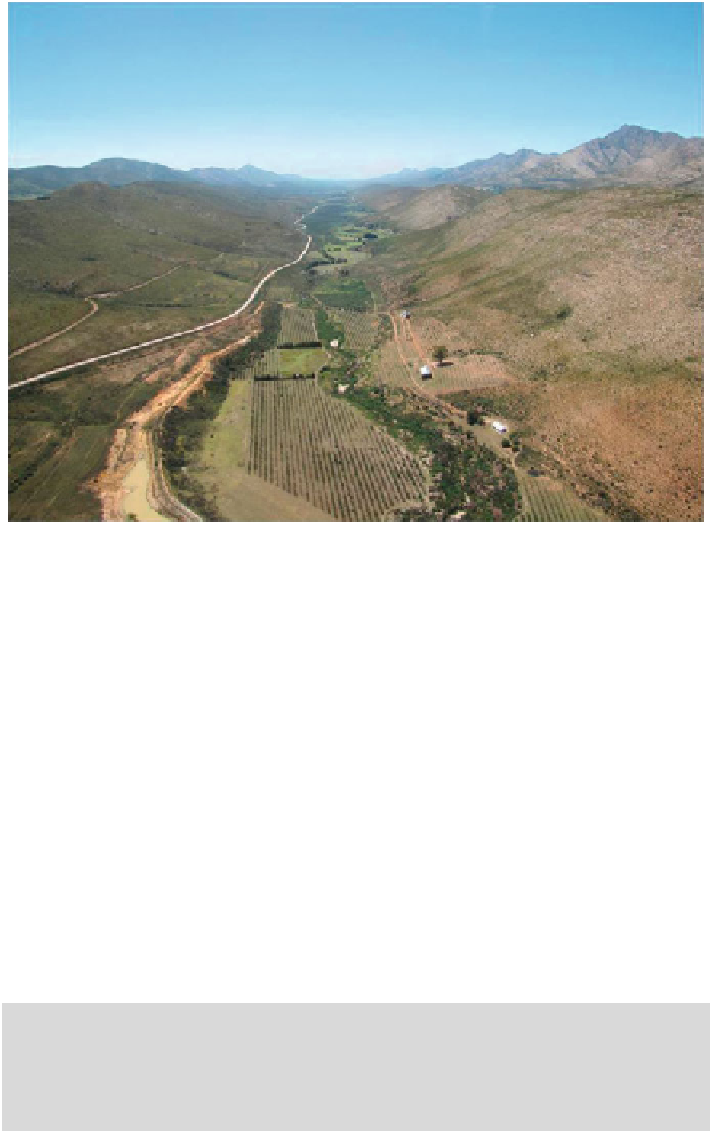Environmental Engineering Reference
In-Depth Information
Fig. 16.1 The Kromme River in the Eastern Cape of South Africa as seen from its headwaters
towards the coast. The Kromme is a narrow river valley, hence the name 'Langkloof', 100 km in
length, bordered on each side by steep mountain ranges. The Kromme River has been heavily
transformed by agriculture as shown in the foreground
Mediterranean-type environments with irregular rainfall, as there is often a
mismatch between seasons when water is needed and when rainfall occurs (Kondolf
2011
). This leads to measures aimed at capturing and using every drop of water
available. Ecosystems need resilience to persist and humankind is making itself
vulnerable by stripping ecosystems of this resilience by compromising their struc-
tural and functional integrity (eroding natural capital). This is particularly apparent
in wetland and riparian ecosystems. Despite the uncertainty surrounding climate
change, there is general agreement that it is likely to result in water shortages and an
increase in floods in southern Africa (Midgley et al.
2005
; Schulze
2005
; Bates et al.
2008
; Le Maitre et al.
2009
). Alternatives to traditional infrastructure (such as dams
and inter-basin transfers), such as using the natural infrastructure it provides (such as
wetlands and aquifers) are likely to prove more effective in mitigating the effects of
climate change and water scarcity (Matthews et al.
2011
).
Ecosystem Goods and Services:
Ecosystem goods and services are the benefits that society derives either directly or
indirectly from ecosystem functions (Daily et al.
2000
; de Groot et al.
2002
).
These goods and services can be classified into three main groups:
Provisioning services (e.g. water, food, fuel),

Search WWH ::

Custom Search